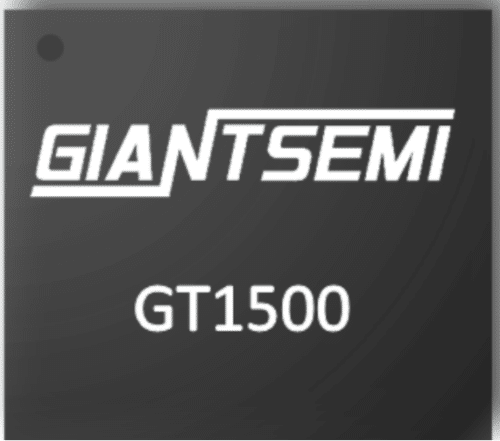The ultra-wideband SoC enables indoor and outdoor positioning, low power consumption, and precise connectivity through integration into IoT devices.

Shenzhen Jieyang Microelectronics Co., Ltd. has released the GT1500, an ultra-wideband (UWB) system-on-chip (SoC) for ranging, positioning, and wireless connectivity applications. The SoC is designed for indoor and outdoor ranging and positioning without relying on network infrastructure coverage. It provides wireless connections at configurable data rates, enabling applications in mobile phones, wearable devices, digital keys, and more across access control, smart payment, smart homes, and smart cities.
The SoC is known for its low power consumption and performance, with a wafer-level packaging size of 9 square millimetres, making it the smallest UWB SoC chip. It integrates RF, analogue, and baseband functions with four receiving channels and works with an embedded MCU for control and protocol processing, all within a single chip.
Suitable for wearables, tags, and IoT products, the SoC simplifies 3D AoA design, reduces peripheral components, and lowers BoM costs. Its design enhances signal reception and UWB performance while extending battery life in UWB tags compared to similar products.
Some of the key features of the UWB SoC include:
- Ultra-thin wafer-level package: 49-pin, 3.2mm x 2.8mm x 0.6mm
- 1T4R architecture: Single chip with one transmitter and four receivers
- Integrated protocols and software for standalone operation
- Supports ranging types: Unilateral, bilateral, bidirectional
- Supports 2D/3D AoA and TDoA measurement
- Frequency range: 4.0 – 9.0 GHz
- Communication rates: 1.2 Mbps, 27.2 Mbps, 7.8 Mbps, 6.8 Mbps, 850 Kbps
- Interfaces: SPI, I2C, UART, GPIO
- Accuracy: ±3 cm for distance, ±3 degrees for angle
- Power consumption: 125mW (receivers), 69mW (transmitter)
Certified by the FiRa Alliance and compliant with the Car Connectivity Consortium (CCC) Digital Key 3.0 standard, the product offers features such as wafer-level packaging, a 1T4R architecture, integrated protocols and software, and support for various ranging and AoA techniques. It operates in the 4.0 to 9.0 GHz frequency range and offers multiple communication rates and interfaces, with a distance measurement accuracy of ±3 cm and angle measurement accuracy of ±3 degrees.
For more information, click here.
The post World’s Smallest and Lowest Power UWB SoC appeared first on Electronics For You.
View more at https://www.electronicsforu.com/special/worlds-smallest-and-lowest-power-uwb-soc.
Credit- EFY. Distributed by Department of EEE, ADBU: https://tinyurl.com/eee-adbu
Curated by Jesif Ahmed